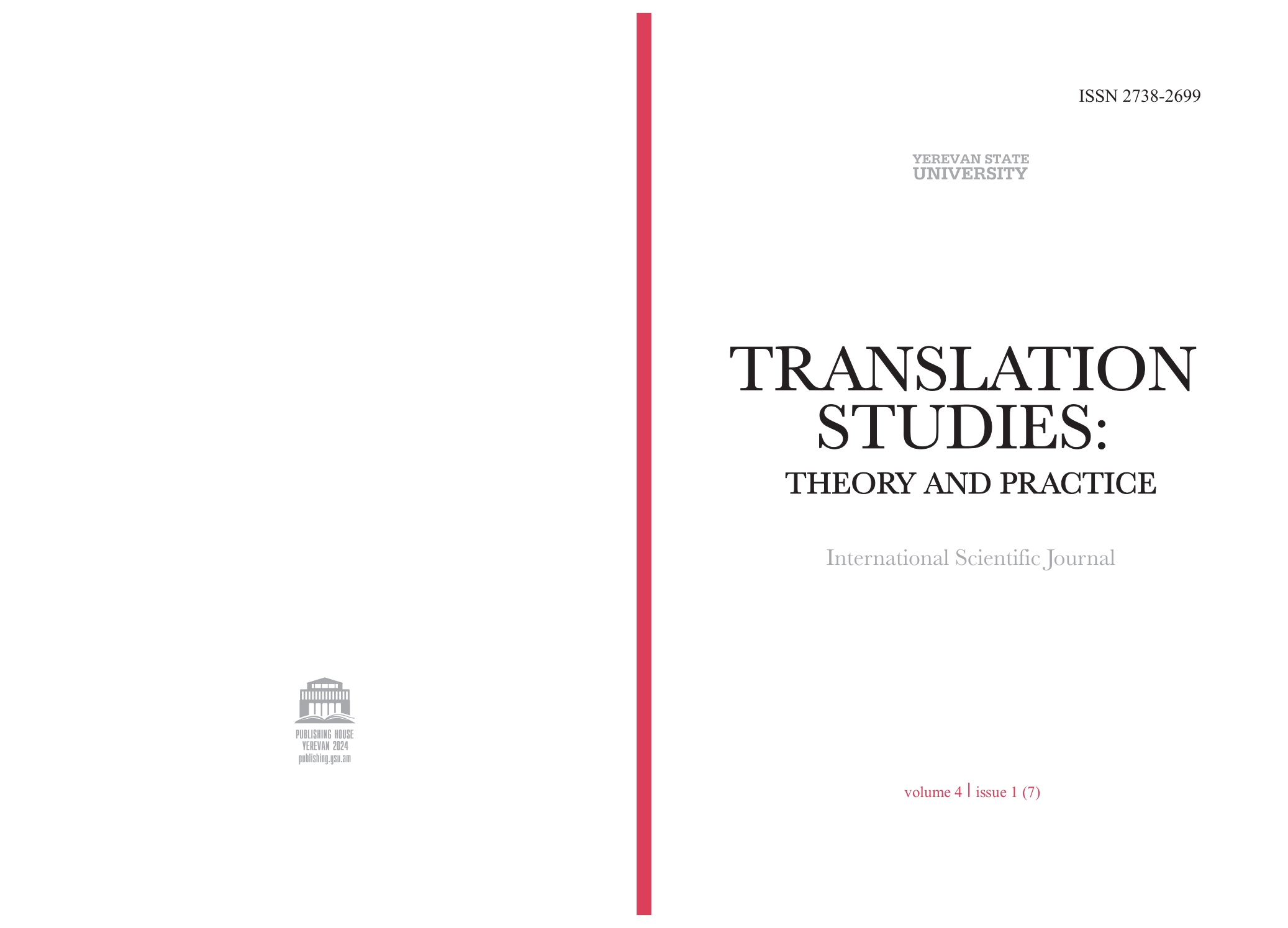The Role of Mediated Translation in Children’s Literature from Cross-Cultural Pragmatics Standpoint: Gianni Rodari’s Adventures of Cipollino in Russian And Armenian
DOI:
https://doi.org/10.46991/TSTP/2024.4.1.061Keywords:
mediated translation, pragmatics perspective, semantic and pragmatic strategies, children’s literatureAbstract
The current thesis zooms in on how the concept of cross-cultural pragmatics can bring forth a theoretical background for mediated translation practice, particularly taking into account equivalence. In this day and age, the criteria for highlighting translation pragmatics of literary texts embrace the vast practical experience, insights into the translation theory, and cross-cultural similarities and dissimilarities set in the mediated translation of children’s literature.
The article is an attempt to uncover crucial cross-cultural elements of the present-day and past translations of children’s literature via mediated language from the translation pragmatics perspective. In the research, we mainly projected a plethora of latent linguostylistic nuances of the author’s style through intermediary language. The data analysis was conducted based on the descriptive-comparative method assuming as a cornerstone semantic and pragmatic strategies suggested by A. Chesterman.
References
Calvo, M., and Buesa, C. 2010. Translation and Cultural Identity: Selected Essays on Translation and Transcultural. Calvo and Carmen Buesa- Scholars Publishing.
Chesterman, A., and Wagner, E. 2002. Can Theory Help Translators? A Dialogue between the Ivory Tower and the Wordface. Manchester: St. Jerome Publishing.
Dollerup, C. 2000. “‘Relay’ and ‘Support’ Translation.” In A. Chesterman, N. G. San Salvador, & Y. Gambier (Eds.), Translation in Context: Selected Contributions from the EST Congress, Granada, pp. 17–26. Accessed November 25, 2023. http://www.cay-dollerup.dk/publications
Evans, J., & Ringrow, H. 2017. “Introduction: Borders in Translation and Intercultural Communication. Transcultural.” A Journal of Translation and Cultural Studies, 9(2), 1. Accessed October 15, 2023. https://doi.org/10.21992/t90089
Hadley, J. 2017. “Indirect Translation and Discursive Identity: Proposing the Concatenation Effect Hypothesis.” Translation Studies, 10(2): 183–197. Accessed October 15, 2023. https://doi.org/10.1080/14781700.2016.1273794
Hekkanen, R. 2014. “Direct Translation – Is It the Only Option? Indirect Translation of Finnish Prose. Literature into English.” In True North: Literary Translation in the Nordic Countries. Newcastle upon Tyne.
Klingberg, Göte. 1986. Children’s Fiction in the Hands of the Translators. Stockholm: Cwk Gleerup
Landers, E. 2001. Literary Translation: A Practical Guide. New Jersey University Press: Multilingual Matters.
Lathey, G. (Ed.). 2006. The Translation of Children's Literature: A Reader. Clevedon: Multilingual matters.
Liddicoat, A. 2016. “Translation as Intercultural Mediation: Setting the Scene.” Perspectives: Studies in Translatology. 24(3): 347–353. Accessed October 20, 2023. https://doi.org/10.1080/0907676X.2015.1125934
Marshak, S. 1953. “Priklyucheniya Chipollino [The Adventures of Cipollino].” Typewritten Copy with Marshak’s Handwritten Remarks: Private Archive of Marshak’s Heirs. Russia.
Nida, E. 1964. “Principles of Correspondence.” In Venuti, L. (Ed.), The Translation Studies Reader. Routledge, London.
Proshina, Z. 2005. “Intermediary Translation from English as a Lingua Franca.” World Englishes: Journal of English as an International and Intranational Language, 24 (4): 517-522.
Potapova, Z. 1952. Pervye pobedy Chipollino [Cipollino’s First Victories]. Literaturnaya gazeta.
Pięta, H. 2019. “Indirect Translation: Main Trends in Practice and Research.” Slovo.Ru: Baltic Accent, 10(1): 21–36. Accessed October 20, 2023. https://doi.org/10.5922/2225-5346-2019-1-2
Ringmar, M. 2007. “Roundabouts Routes: Some Remarks on Indirect Translations.” Francis Mus (Ed.), Selected Papers of the CETRA Research Seminar in Translation Studies 2006. Accessed October 20, 2023. http://www.kuleuven.be/cetra/papers/papers.html
Shuttleworth, M., and M. Cowie (Eds.). 1997. Dictionary of Translation Studies. Manchester: St Jerome.
St. André, J. 2008. “Relay.” In M. Baker, and G. Saldanha (Eds.), Routledge Encyclopedia of Translation Studies, 2nd Ed., pp. 230-232. London/New York. Accessed October 25, 2023. http://www.benjamins.com/online/tsb/; http://aplicacionesua.cpd.ua.es/tra_int/usu/buscar.asp?idioma=en
Thomson-Wohlgemuth, G. 2009. “Translation under State Control.” In Books for Young People in the German Democratic Republic. New York: Routledge
Thomas, E. 2016. “Stories Still Matter: Rethinking the Role of Diverse Children’s Literature Today.” Language Arts, 94(2), 112–118.
Downloads
Published
How to Cite
Issue
Section
License
Copyright (c) 2024 Irina Mkhitaryan, Diana Hayroyan

This work is licensed under a Creative Commons Attribution-NonCommercial 4.0 International License.










